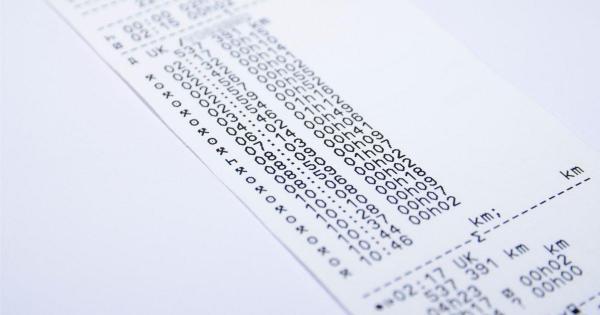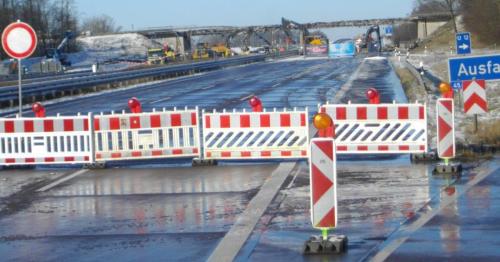2022-04-14
Traffic gridlock across Dover - temporary derogation from the provisions of Regulation 561/2006

In response to the exceptional pressures on the freight industry, the Department for Transport (DfT) has introduced a temporary relaxation of the enforcement of the EU drivers’ hours rules in England, Scotland and Wales.
This temporary relaxation of the rules reflects the urgent situation arising from the cancellation of some ferry services. This is resulting in congestion in and around ports affecting the carriage of goods and passengers by road.
Timing of the relaxation
The relaxation of the rules applies from 12:01am on 9 April 2022 until 11:59pm on 8 May 2022. The current situation is being kept under review, and the department reserves the right to withdraw or amend the relaxation if circumstances change.Scope of the relaxation
Anyone driving under the EU drivers’ hours rules and undertaking the carriage of goods or passengers by road can use this relaxation where necessary. The relaxations are not limited to specific sectors or journeys.This relaxation does not apply to drivers in scope of the GB domestic drivers’ hours rules and, so, not subject to tachograph controls.
Drivers’ hours rules are an important road safety measure and any deviation from the rules must be a last resort when other means of mitigating a situation have failed.
Therefore, the temporary exceptions to the drivers’ hours rules must only be used where necessary by drivers and transport operators.
When considering whether it is necessary to use the relaxation, DfT considers the following 3 conditions all need to be met (any transport operator intending to use the relaxation must consider whether the conditions are met):
1. Evidence of detriment to wider community
That there is a significant risk of a threat to human and/or animal welfare or a failure of a particular supply chain that will have a serious impact on essential public services.
Transport operators must obtain, to their satisfaction, confirmation from their customers that such a risk exists and that the customer is unlikely to be able to resolve the risk in other ways.
In the context of the transportation of food, fuel and medicines, this would include avoiding the risk of acute shortages at retail outlets that would be readily apparent to consumers.
In respect of these sectors and essential public services, they can include losses of production that would then lead to shortages.
However, shortages at retail outlets are not a justification in respect of many types of goods, such as domestic building supplies, clothing or supplies to hospitality.
2. Evidence that a relaxation would lead to a significant improvement in the situation
This includes evidence that the risk is unlikely to be resolved without using the relaxation.
3. Driver safety must not be compromised
Operators and self-employed drivers must assess the risks of using the temporary relaxation and implement suitable control measures and/or mitigations, so that the safety of the driver, other road users and those involved in loading and unloading is not compromised.
Transport managers should make sure that a risk assessment has been carried out and appropriate controls put in place. They should also continue to monitor and review where necessary as long as the relaxation is used.
It is important to consider the risk of fatigue and the effect of the relaxation on shift patterns. For example, if the relaxation related to daily driving time has been used, it should not be followed by a reduced daily rest period and should be used in the context of stable start times for shifts.
Information about fatigue and shift work is available.
It should be noted that the temporary relaxation has been brought in primarily to add reliability and resilience to duty rosters, as opposed to extra scheduling of deliveries.
It is also essential that use of the relaxation is agreed genuinely with the drivers involved, including in the light of a driver’s specific circumstances.
Drivers continue to be bound by the Road Transport (Working Time) Regulations 2005. This legally limits the amount of working time (including driving) a driver can do in any given week to a maximum of 60 hours, with an average of 48 hours a week calculated over a rolling 17- to 26-week period.
If you are concerned that a driver or the vehicle operator is breaking the drivers’ hours rules, (including the terms of this temporary relaxation) or the working time regulations, this should be reported to the Driver and Vehicle Standards Agency (DVSA).
Details of the relaxation
The retained EU drivers’ hours rules can be temporarily relaxed as follows:(a) Replacement of the EU daily driving limit of 9 hours with one of 11 hours.
(b) Reduction of the daily rest requirements from 11 to 9 hours, together with a relaxation on the use of the ferry/train derogation to allow its use when on a reduced daily rest of 9 hours (instead of when on a regular rest period of 11 hours).
(c) Lifting the weekly (56 hours) and fortnightly driving limits (90 hours) to 60 and 96 hours respectively.
(d) Postponement of the requirement to start a weekly rest period after 6 x 24-hour periods, for after 7 x 24-hour periods, although 2 regular weekly rest periods or a regular and a reduced weekly rest period will still be required within a fortnight.
Drivers’ must not use relaxation (a) and (d) at the same time. This is to ensure drivers can get adequate rest.
All other drivers’ hours rules remain in force unchanged, including the requirement for drivers to take at a break period of at least 45 minutes after 4 hours, 30 minutes of driving.
Use of the relaxation
The practical implementation of the temporary relaxation should be through agreement between employers and employees and driver representatives.Operators must notify the DfT if this relaxation is used by completing an initial notification of relaxation form and emailing a copy to RSSSFOLRCOVID19@dft.gov.uk.
A completed follow-up notification of relaxation form must then be emailed to RSSSFOLRCOVID19@dft.gov.uk one week after the end of the period of relaxation and by 15 May 2022 at the latest.
Notification forms are not required:
- for operators using the relaxation only in the course of international journeys via Kent- from operators established outside the UK.
When driving under the retained EU drivers’ hours rules, drivers must note on the back of their tachograph charts or printouts the reasons why they are exceeding the normally permitted limits. This is usual practice in emergencies and is essential for enforcement purposes.
The temporary relaxation of the rules reflects the urgent situation arising from the cancellation of some ferry services. This is resulting in congestion in and around ports affecting the carriage of goods and passengers by road.
DfT encourages operators facing high work demands or work absences to take urgent measures to secure drivers who have limited or no current work. DfT wishes to make clear that driver safety must not be compromised. Drivers should not be expected to drive while tired. Employers remain responsible for the health and safety of their employees and other road users. DfT emphasises that, as a general rule, we expect business to plan for and manage the risks of disruption to supply chains.
Please note that relaxations in relation to transport undertaken solely in the territory of Northern Ireland are a matter for the devolved authority.
gov.uk







